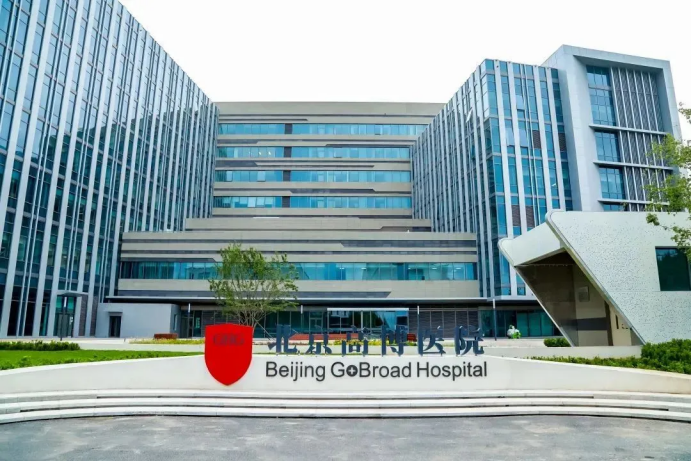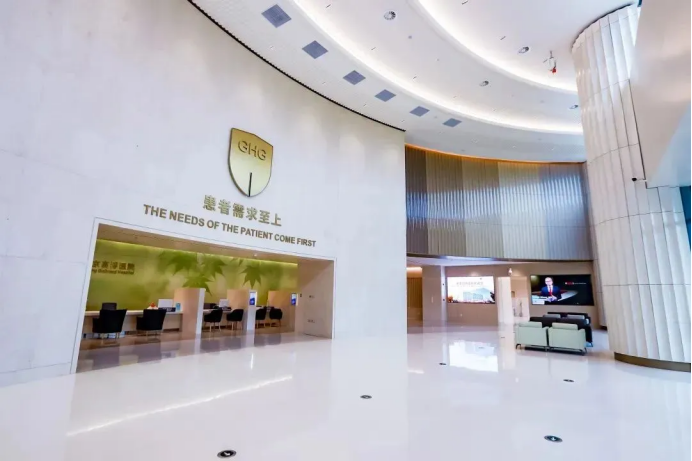China's Nuclear Medicine is Still in Its Early Stages: What Are the Key Challenges?
Introduction
Nuclear medicine has reached a critical development juncture. The growth prospects have opened up a bright future, but there are still significant challenges to overcome. From the broad issue of how to break the monopoly on radionuclides, to the more specific questions of how to find the right clinical principal investigator (PI), how to establish nuclear medicine treatment wards, and how relevant departments can collaborate effectively—these are gaps that urgently need to be addressed.
Beijing GoBroad Hospital, as a research-oriented hospital with strategic goals in difficult and critical disease diagnosis and treatment, clinical research, and biomedicine industry transformation, has always been dedicated to promoting medical technology innovation and advancement. Recently, Beijing GoBroad Hospital successfully passed the review and obtained the qualification to conduct clinical applications of Lutetium-177 [(177)Lu].
China has implemented strict regulations on the clinical application of nuclear medicine, with harsh approval conditions and a complex approval process. The hospital’s achievement marks an important step in advancing domestic nuclear medicine research and application.
This also brings good news for patients with gastrointestinal, pancreatic, and neuroendocrine tumors in China. According to reports, a PRRT (peptide receptor radionuclide therapy) trial using Lutetium-177 for neuroendocrine tumors, led by Professor Lu Ming from Peking University Cancer Hospital and Beijing GoBroad Hospital, is currently underway. PRRT has become an essential treatment for neuroendocrine tumors. "The control time for this disease is far superior to all existing therapies, with very significant advantages," said Lu Ming, expressing great confidence and optimism. At this moment, the breakthrough clinical value of nuclear medicine is becoming a reality.
In the past year, nuclear medicine has shown strong vitality and growth in the Chinese market, and the nuclear medicine industry has become a strategically supported emerging industry.
However, for an emerging industry to transition from its initial stage to maturity, it must overcome various challenges. Currently, issues such as the domestic supply of radionuclides, transportation, and distribution remain unresolved. Midstream companies have not yet developed mature research and development capabilities or commercialization experience. At the downstream application level, the difficulty of coordinating multiple departments in hospitals is significant, and there is a limited number of treatment beds for nuclear medicine. For those in nuclear medicine research hospitals (which link upstream and reach patients), the "hands-on" experience is particularly profound. Recently, E-Pharma Manager visited Beijing GoBroad Hospital and conducted in-depth interviews with Professor Lu Ming from Peking University Cancer Hospital and Beijing GoBroad Hospital, and Dr. Du Rui, Medical Director of the Clinical Research Center at GoBroad. Standing from a professional perspective and drawing on personal experiences, they answered some key industry questions.
• Why are there so few nuclear medicine research hospitals in China? What are the real challenges they face?
• What are the key issues that need to be addressed for better development of nuclear medicine in China?
The Overcrowding of Nuclear Medicine Treatment Hospitals
Industry veterans are aware that nuclear medicine has a history of around 70 years, but 99% of this field is focused on diagnostic nuclear medicine, not therapeutic nuclear medicine. Over the past two years, two RDC products that have already been launched have exceeded commercial expectations, with Pluvicto now becoming a "billion-dollar molecule." As a result, the industry has seen a surge in RDC development, and nuclear medicine research and clinical applications are becoming increasingly "busy."
During this period, many pharmaceutical companies, both domestic and biotech firms specializing in this field, have approached Professor Lu Ming’s team. Additionally, nuclear medicine investment and financing have been booming, with numerous favorable policies being introduced.
While this vitality is undoubtedly a good thing, is the industry truly prepared across all fronts?
One notable phenomenon is that “patients waiting for nuclear medicine treatment have a very high degree of acceptance and willingness, but many are still in the queue,” as Lu Ming deeply feels.
There are two main reasons for this.
One key reason is that hospitals, nuclear medicine treatment wards, and dedicated treatment beds are still limited.
According to authoritative data, by the end of 2023, there were 1,237 departments (or divisions) engaged in nuclear medicine in China. Among these, 763 institutions provide radionuclide therapy, 709 of which have specialized outpatient clinics, and 389 have dedicated nuclear medicine treatment wards. Approximately 800 medical institutions offer radionuclide therapy, with 2,993 dedicated treatment beds available.
Dr. Du Rui pointed out that several factors are restricting this situation. First, there are strict regulatory limitations. Environmental protection, health administration, and other relevant departments impose high requirements on the qualifications for radionuclide therapy, ward construction standards, equipment configuration, and personnel qualifications. As a result, the approval process is complex and stringent. “Hospitals must have complete qualifications, including radiation diagnosis licenses, radiation safety permits, and Good Clinical Practice (GCP) certification for nuclear medicine departments,” said Du Rui.
Second, the construction costs are high. Building nuclear medicine treatment wards requires avoiding patient traffic and creating "isolated wards" to ensure "zero radiation" outside the ward. After treatment, patients need to stay briefly in the hospital to expel radioactive substances from their bodies. However, the number of nuclear medicine treatment wards and waste disposal systems in China is still developing and being improved. Additionally, the storage time for iodine-131 waste liquids has been extended from 10 half-lives to 180 days, requiring substantial space for decay pools and careful monitoring of environmental protection regulations.
Third, there is a shortage of specialized doctors and skilled personnel. Authoritative data shows that by the end of 2023, China had more than 15,000 nuclear medicine professionals, with 6,748 being physicians, many of whom have diagnostic experience. “Radionuclide therapy involves multiple professional fields, including nuclear medicine, radiophysics, and radiobiology, and requires skilled medical personnel to operate and manage. However, there is still a relative scarcity of such multidisciplinary professionals in China.” Given the specialized and unique nature of nuclear medicine, the training cycle for such personnel is long and challenging.
Fourth, there is insufficient collaboration among departments. In the past, the focus was mainly on diagnostic radiopharmaceuticals, but now more therapeutic drugs are under research. However, when implementing these projects, coordinating across departments such as radiology, nuclear medicine, and oncology presents significant challenges. Lu Ming remarked, “From the perspective of clinical doctors, we regularly face a wide variety of patients, with professional understanding of various diseases. We also have a clearer understanding of the benefits nuclear medicine treatments can bring to patients.” His team began exploring nuclear medicine therapy back in 2017, when the field wasn’t as developed as it is now. Over the years, the team has remained quite stable. "The diagnosis and treatment of neuroendocrine tumors is very specialized and requires a fixed multidisciplinary team. The team we’ve built has collaborated for many years. We have internal and external medicine doctors, including gastroenterology and hepatobiliary specialists, as well as experts in imaging, pathology, oncology, and more. We also have some of the country’s top nuclear medicine experts specializing in neuroendocrine tumors. Furthermore, we are one of the earliest teams in China to explore nuclear medicine therapy for neuroendocrine tumors. Our years of experience in collaboration allow us to have a clearer vision of the future and ensure more efficient clinical trials for nuclear medicine.”
Therefore, the progress made by nuclear medicine research hospitals such as Beijing GoBroad Hospital is an important force in driving the development of nuclear medicine in China.

In 2023, Beijing GoBroad Hospital officially began operations. In April, it established a specialist medical alliance with Peking University Cancer Hospital, focusing on the development of key departments, talent cultivation, and scientific research collaboration in fields such as digestive tumors. In September, multiple PRRT (Peptide Receptor Radionuclide Therapy) projects for neuroendocrine tumors, conducted by Peking University Cancer Hospital and Beijing GoBroad Hospital, were launched. In November, Beijing GoBroad Hospital obtained the qualification for clinical application of Lutetium-177 radionuclide.
In terms of radiation protection, Beijing GoBroad Hospital has implemented strict radiation shielding measures and conducted professional radiation safety analyses for the Lutetium-177-specific treatment wards to ensure that the surrounding dose equivalent meets radiation safety requirements. The hospital also has a dedicated radiation safety and environmental protection management organization responsible for comprehensive radiation safety management and supervision.
Currently, Beijing GoBroad Hospital has four radionuclide treatment wards, and it can provide treatment for 200 patients annually.
When asked about the advantages of Beijing GoBroad Hospital in conducting nuclear medicine clinical research, Dr. Du Rui highlighted two main points. On the one hand, the hospital implements a "dual PI" model with both nuclear medicine specialists and clinical experts serving as co-principal investigators for nuclear medicine clinical research. This model reduces the excessive functions and burdens of a single PI in the traditional setup, while leveraging the respective professional strengths of both sides, which facilitates interdisciplinary collaboration and the generation of scientific research outcomes. On the other hand, the clinical departments' collaboration with Peking University Cancer Hospital provides abundant patient and clinical resources.
In recent years, Professor Lu Ming's multidisciplinary team has not only strengthened clinical advantages but also gradually broken down disciplinary barriers, innovating research models and forming a "main force" in the exploration of nuclear medicine treatments, characterized by early development, broad exploration of radionuclides, high research and development efficiency, and clear technical advantages. The platform and advantages provided by Beijing GoBroad Hospital also serve as the "core" support behind the high efficiency of the PRRT project led by Professor Lu Ming, which is expected to be launched in 2024 and completed by the first half of 2025.
Looking back at the issue of patients "waiting in line" for nuclear medicine treatment, another key reason, in addition to hospital and ward limitations, is that nuclear medicine resources are simply "not enough."
Supply Chain Obstacles, R&D Entering the "Race"?
"China’s domestic nuclear medicine production capacity is low and heavily reliant on imports," said Lu Ming. "Although the country now has the necessary reactor designs, testing, and operational foundations for producing radioactive isotopes, it has not yet developed large-scale production capacity."
Previously, some interviewees explained to E-Pharma Manager that the mainstream domestic research on beta isotopes, such as Lutetium-177, is 95% imported, while isotopes like Molybdenum-99, Iodine-125, Carbon-14, Strontium-90/Yttrium-90 are all reliant on imports. At the same time, there is a high demand for medical isotopes in China, with a high annual growth rate, but there is a severe lack of domestic supply, creating a large gap, and in the buying and selling relationship, China is in a relatively weak position.
Additionally, nuclear medicine isotopes have a short half-life, with some having a half-life of only a few hours. This makes it impossible to produce them in bulk in advance. The preparation and administration time must be very precise, placing extremely high demands on the production and distribution of radioactive isotopes and finished pharmaceuticals. Only entities with transportation qualifications can deliver them, making the process costly. "The treatment process is also quite complicated. Once the treatment plan is determined, the medication needs to be prepared abroad and shipped to China, a process that takes more than two weeks and is fraught with uncertainties."
Moreover, the total amount of radioactive isotopes allocated to hospitals in China is usually limited. Once transported from abroad, it must be quickly delivered to patients. "It becomes a race—if you don’t manage to secure it, you’re left waiting in line."

The Issue of Radionuclide Production Capacity Also Directly Affects Costs. "Currently, the cost of nuclear medicine treatment is quite high. On average, one treatment in China costs about 100,000 yuan, and a patient typically requires 4 to 5 treatments."
Nuclear medicine therapy, following radiation therapy, chemotherapy, targeted therapy, and immunotherapy, provides an effective "weapon" for extending the life cycle of patients with advanced cancer.
The global nuclear medicine market is expected to accelerate from $8.4 billion in 2023 to $29.4 billion by 2030, with a compound annual growth rate (CAGR) of 20%. The scale of the nuclear medicine market in China is also expected to grow from 7.8 billion yuan in 2023 to 26 billion yuan by 2030. Nuclear medicine treatments are beginning to "emerge" in multiple disease fields, particularly showing positive results in neuroendocrine tumors and prostate cancer.
In April this year, the research teams from the Gastrointestinal Oncology Department and the Nuclear Medicine Department at Peking University Cancer Hospital published the results of a prospective Phase II clinical study on 177Lu-DOTATATE (Lutathera) in Chinese patients with advanced gastrointestinal pancreatic neuroendocrine tumors (GEP-NET). The study demonstrated excellent treatment effects and good safety.
This offers a promising treatment option for patients with rare tumors in China, with the potential to significantly improve their quality of life and extend survival. Lu Ming firmly believes that RDC (Receptor-Targeted Radionuclide Therapy) is likely to become the standard first-line treatment for neuroendocrine tumors and may even become the primary treatment method for the disease in the future.
In addition to neuroendocrine tumors, both Lu Ming and Du Rui see potential for nuclear medicine in other disease areas, such as prostate cancer. "Theoretically, what ADC (Antibody-Drug Conjugates) is doing now, we can achieve as well, and even extend beyond its application scope."
"China’s clinical trial process for nuclear medicine is not a problem, and its efficiency is even higher than overseas," they said. However, at the same time, both Lu Ming and Du Rui believe that to further explore nuclear medicine applications, some practical issues still need to be addressed:
- The development of radionuclides is relatively concentrated, with β-radionuclides represented by Lutetium-177 (177Lu) and α-radionuclides represented by Actinium-225 (Ac-225).
- Target indications are concentrated. In Du Rui's view, the biggest pain point in China’s nuclear medicine research and development is the lack of new targets. About 70% to 80% of the clinical trials for nuclear medicine in China, as well as in Europe and the United States, focus on targets such as PSMA (Prostate-Specific Membrane Antigen) and SSTR (Somatostatin Receptor).
- Targeting ligands are nearly identical. In theory, RDC (Receptor-Targeted Radionuclide Therapy) has a broad scope and can be divided into antibody-conjugated radionuclide drugs (ARC), small-molecule-conjugated radionuclide drugs, and peptide-conjugated radionuclide drugs (PRC). However, with Novartis leading with two drugs in the field, most of the pipelines currently in development are peptide-conjugated radionuclide drugs. Overall, the market for existing nuclear medicine products is becoming saturated, and new products are needed to break through the market size, but there is still a lack of products capable of breaking the competitive landscape.
To solve these key issues, both Lu Ming and Du Rui believe that it is necessary to strengthen basic research and early preclinical studies. There is a need for differentiated, breakthrough innovation in areas such as identifying new targets, developing novel radionuclides, advancing indications, and exploring different targeting ligands. However, currently, "basic research is relatively weak, original contributions are insufficient, and the ability to create unique, innovative solutions is not yet strong."
Content source | E-Pharma Manager















